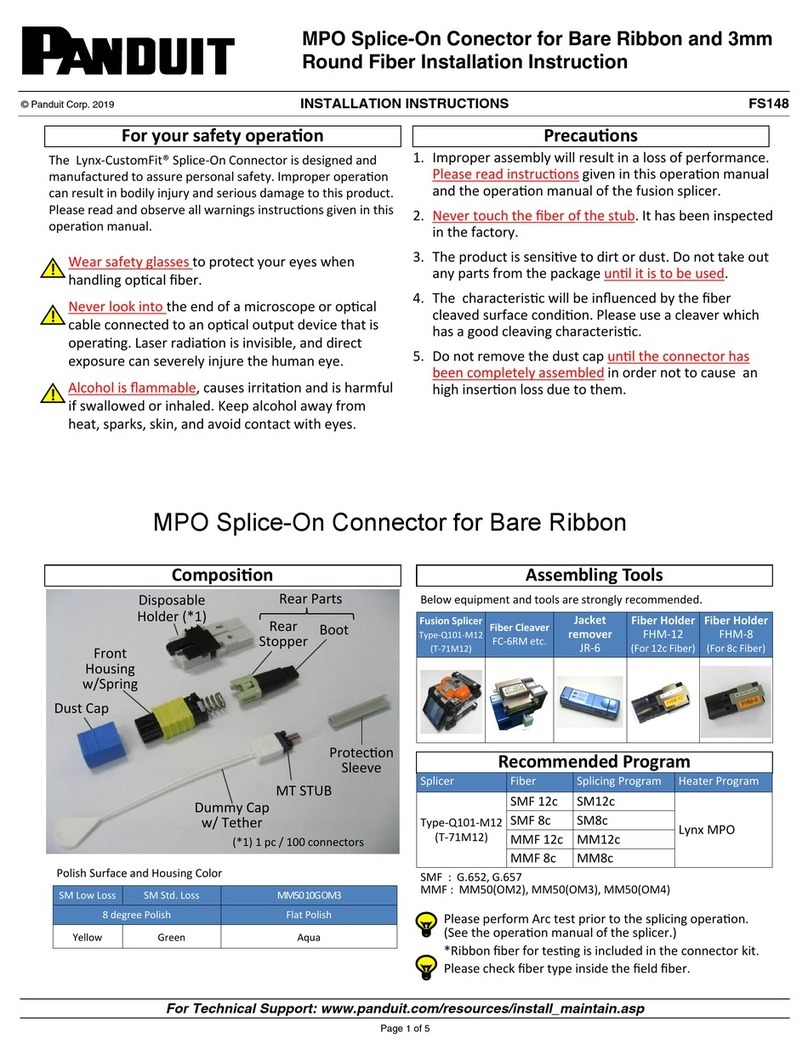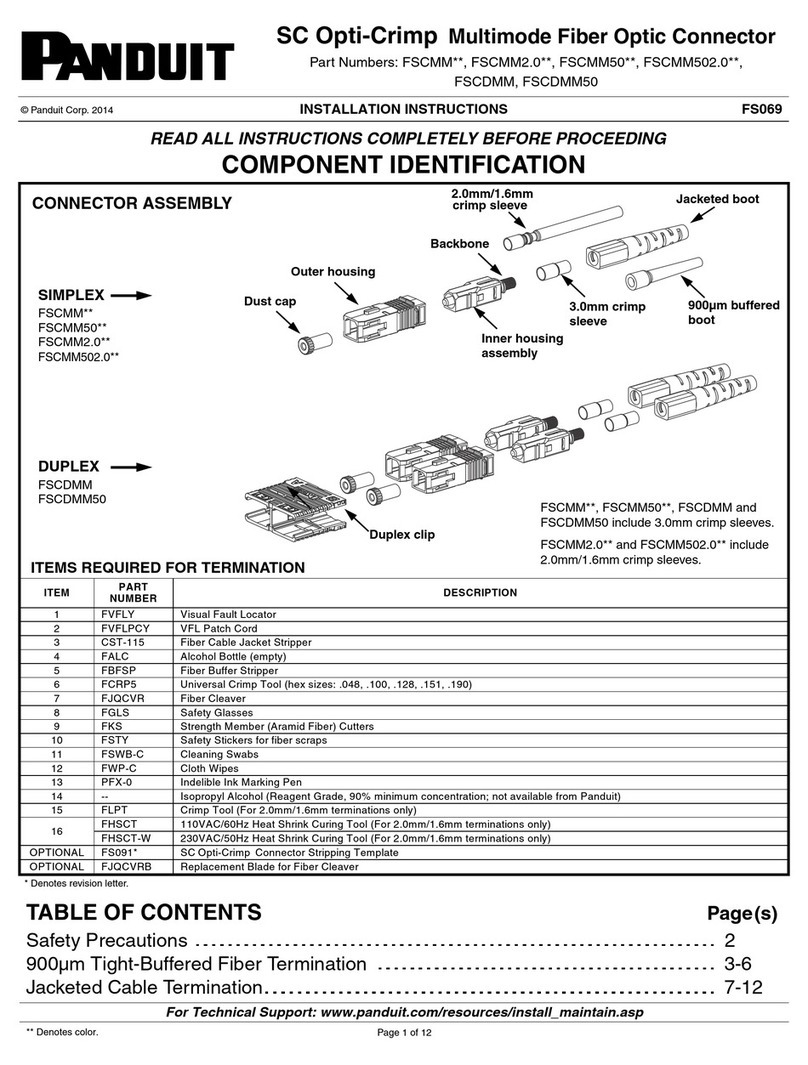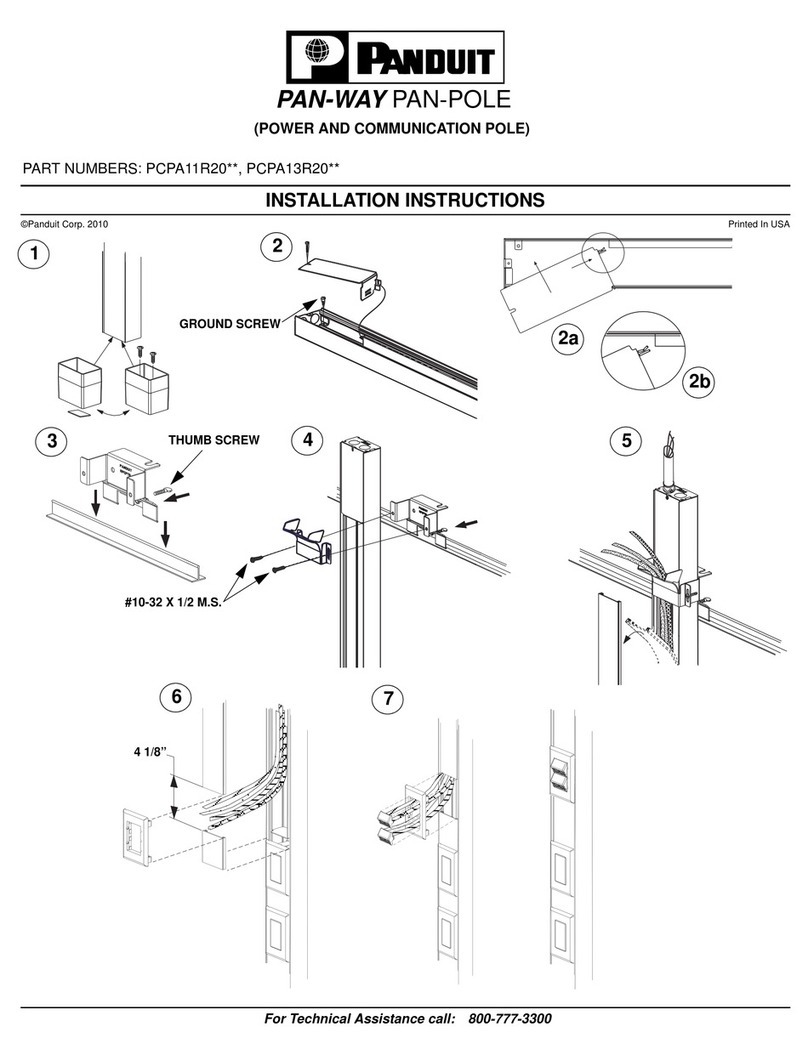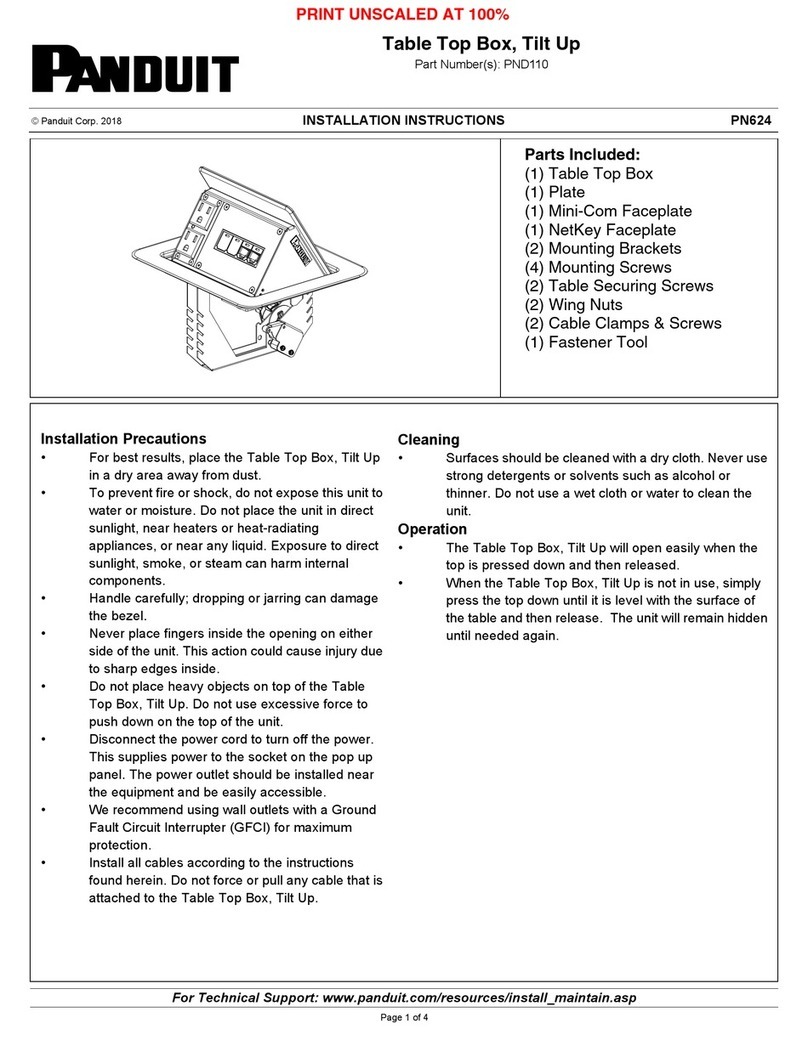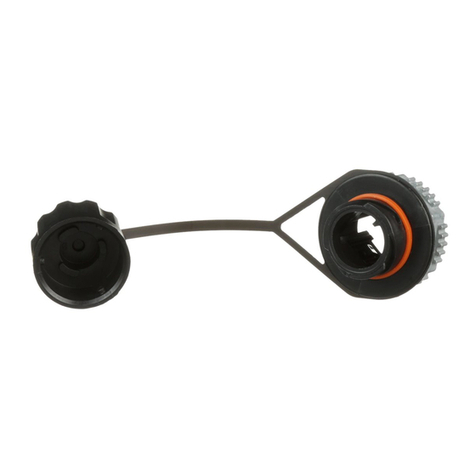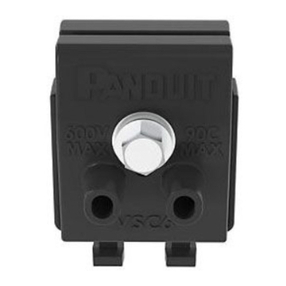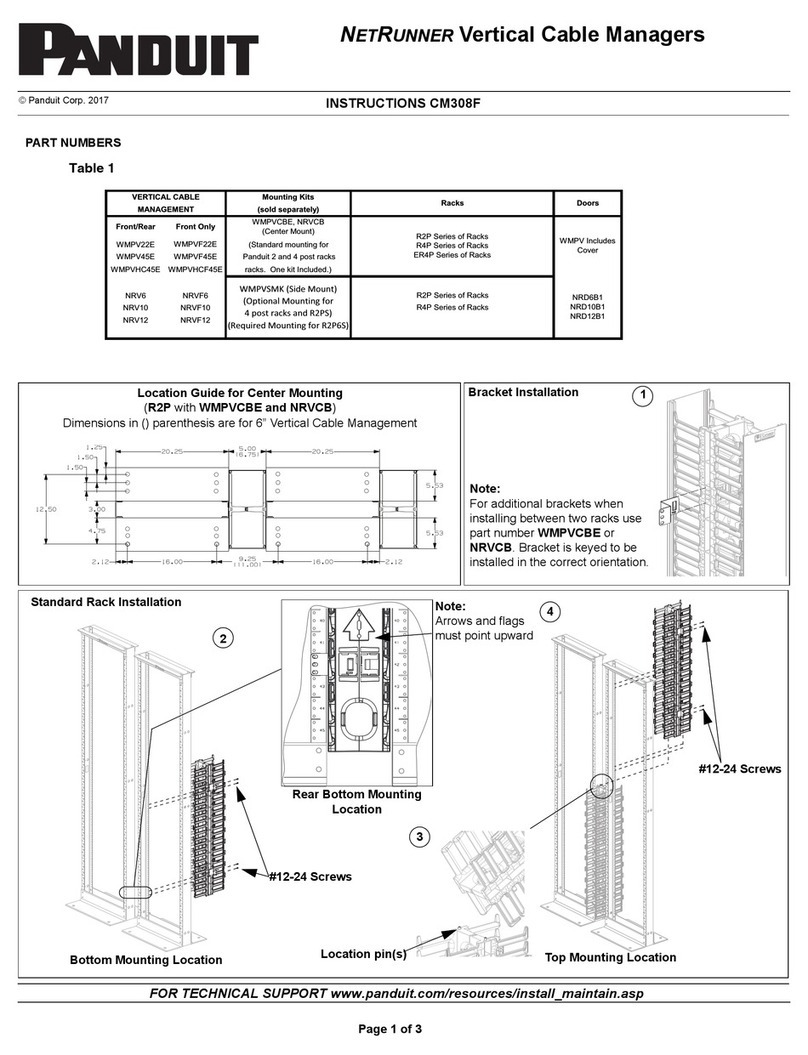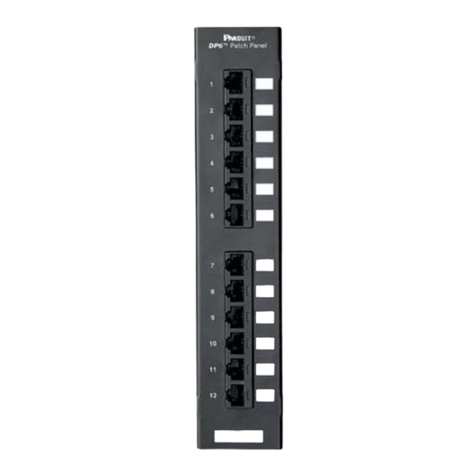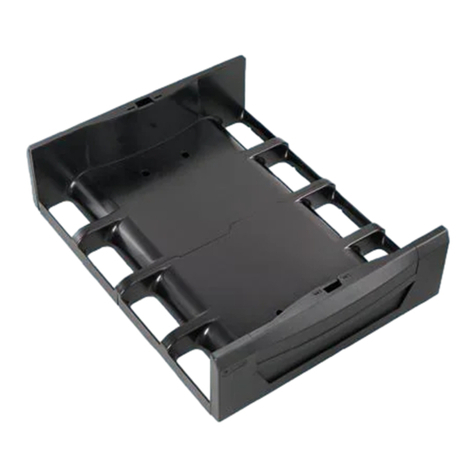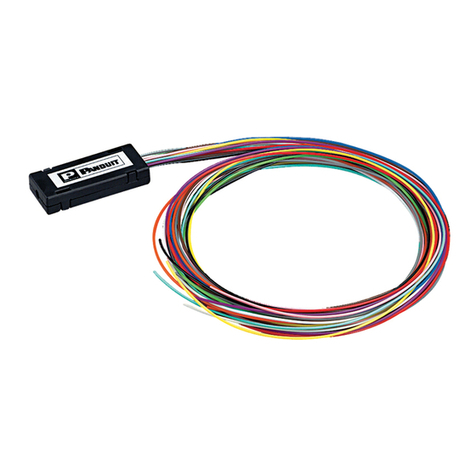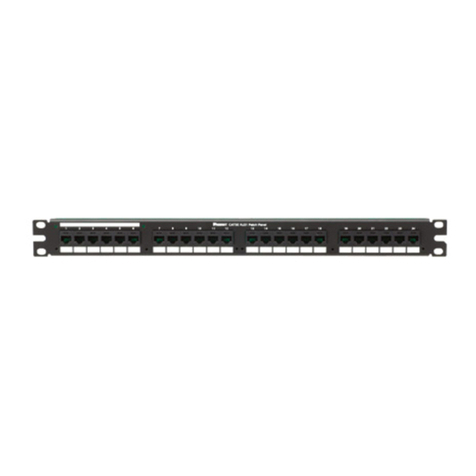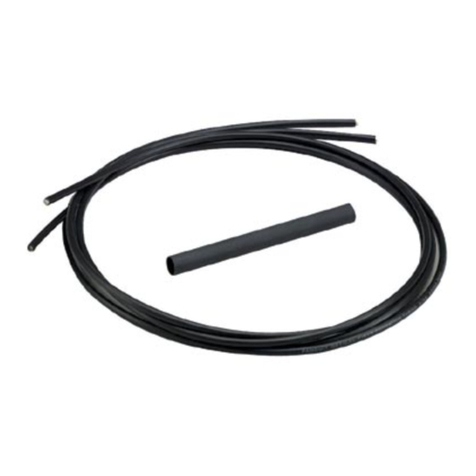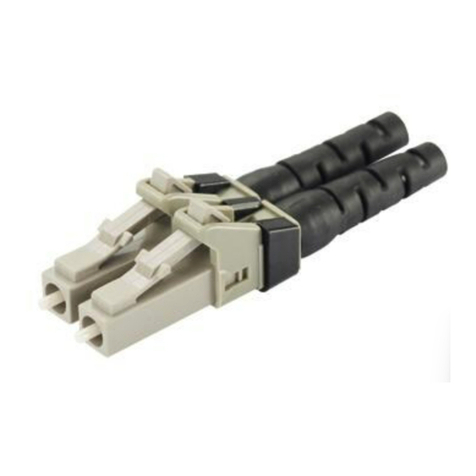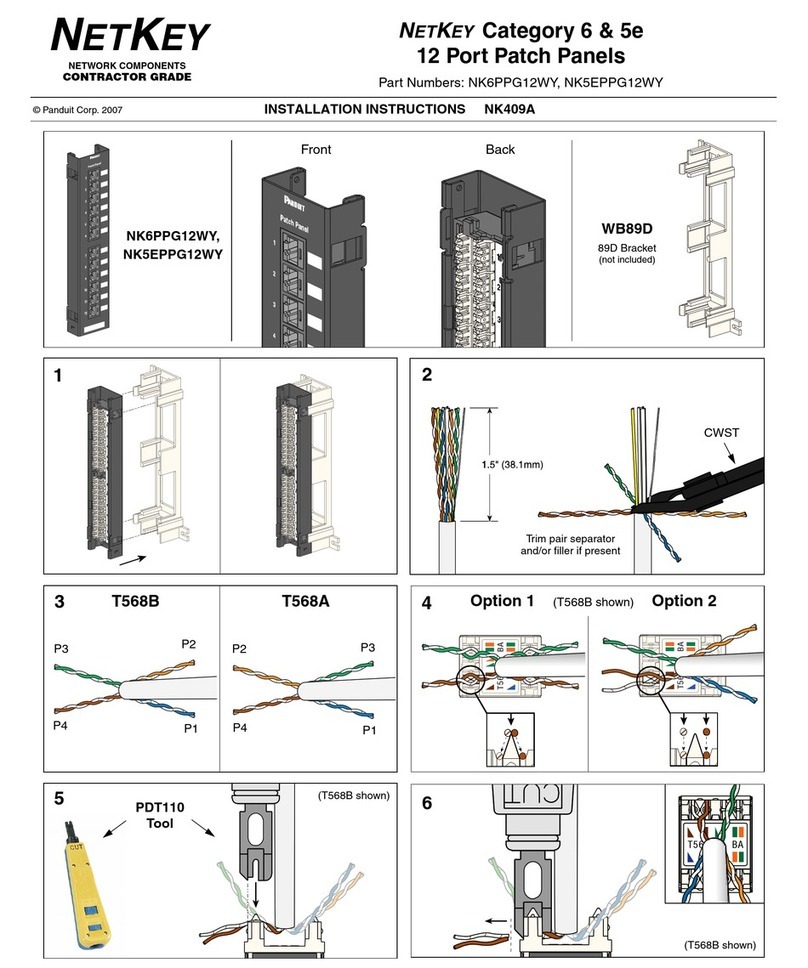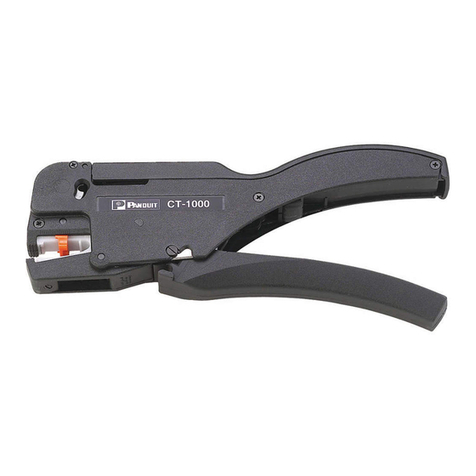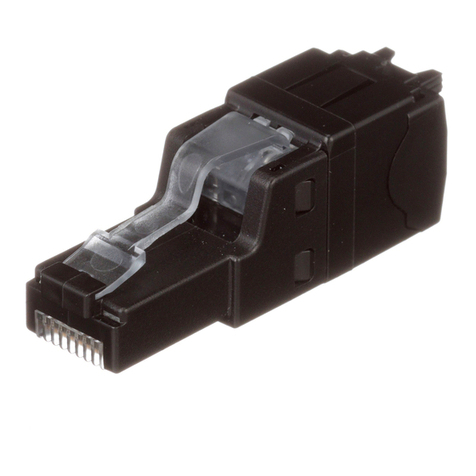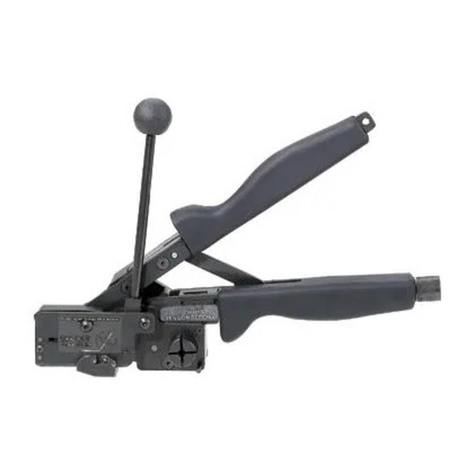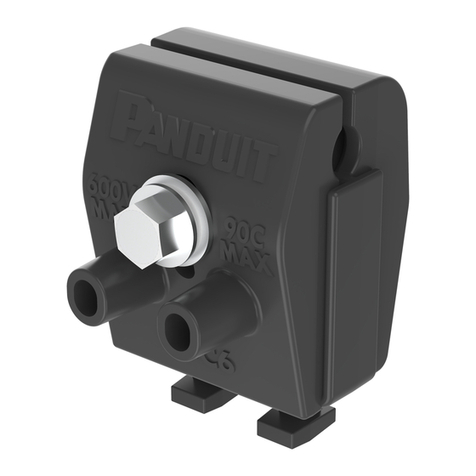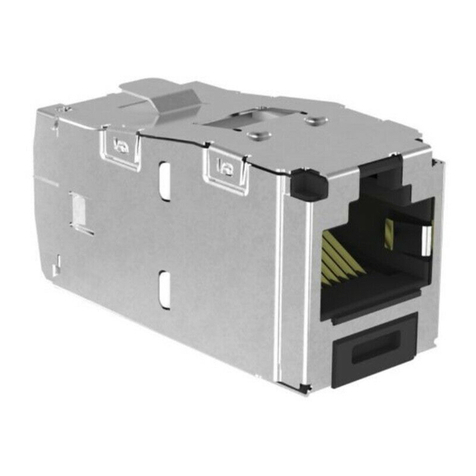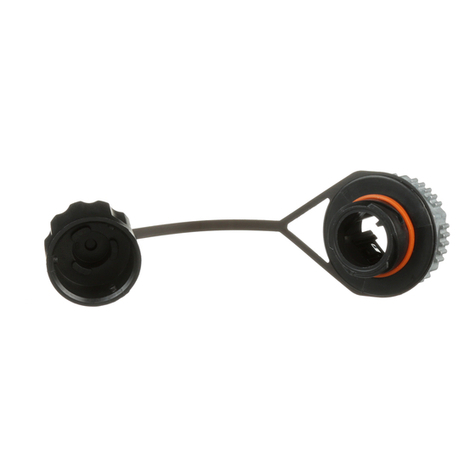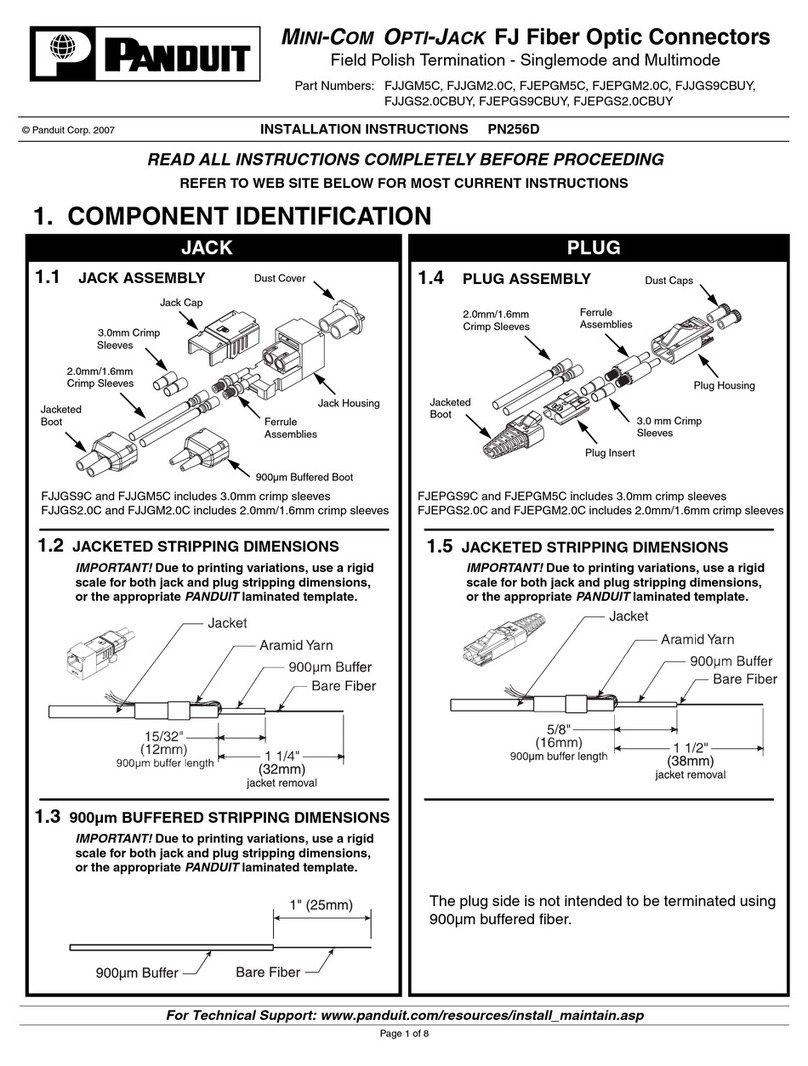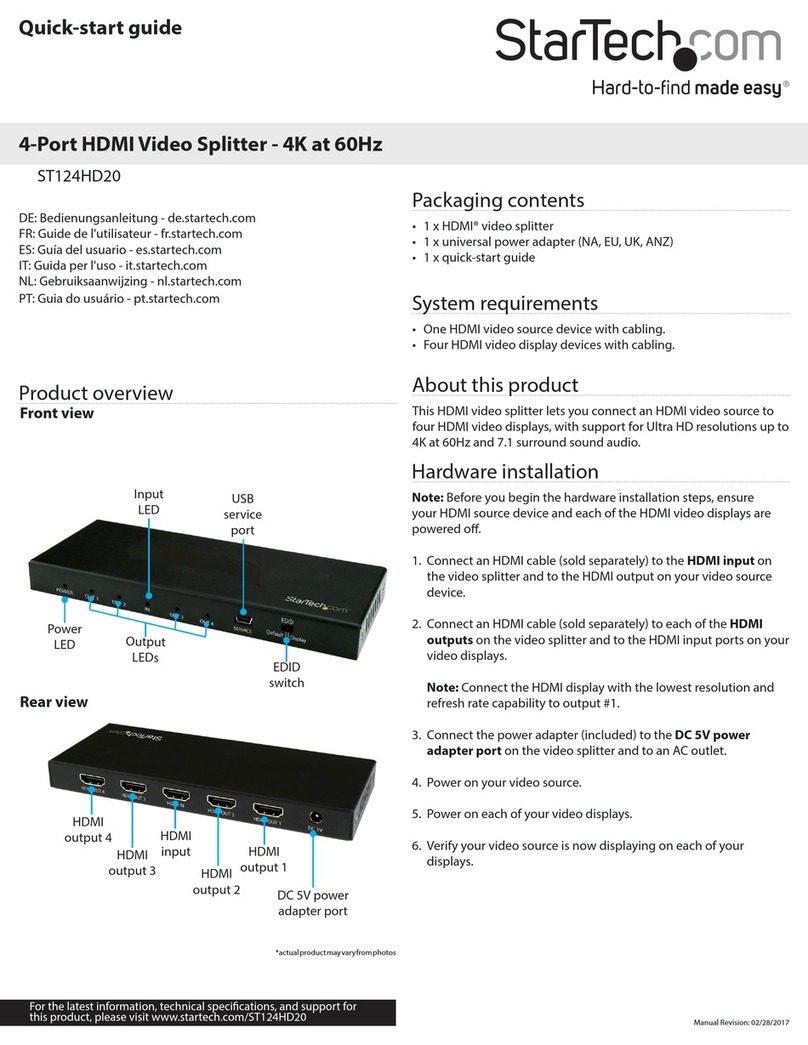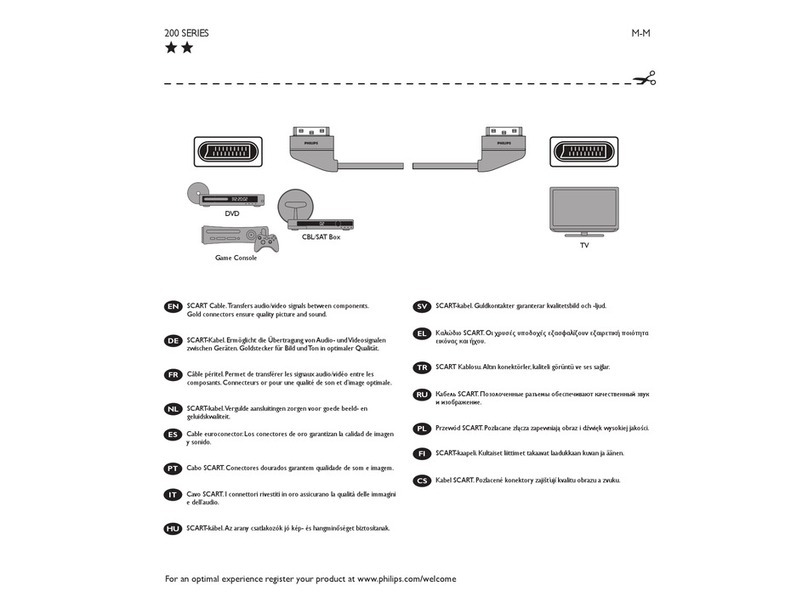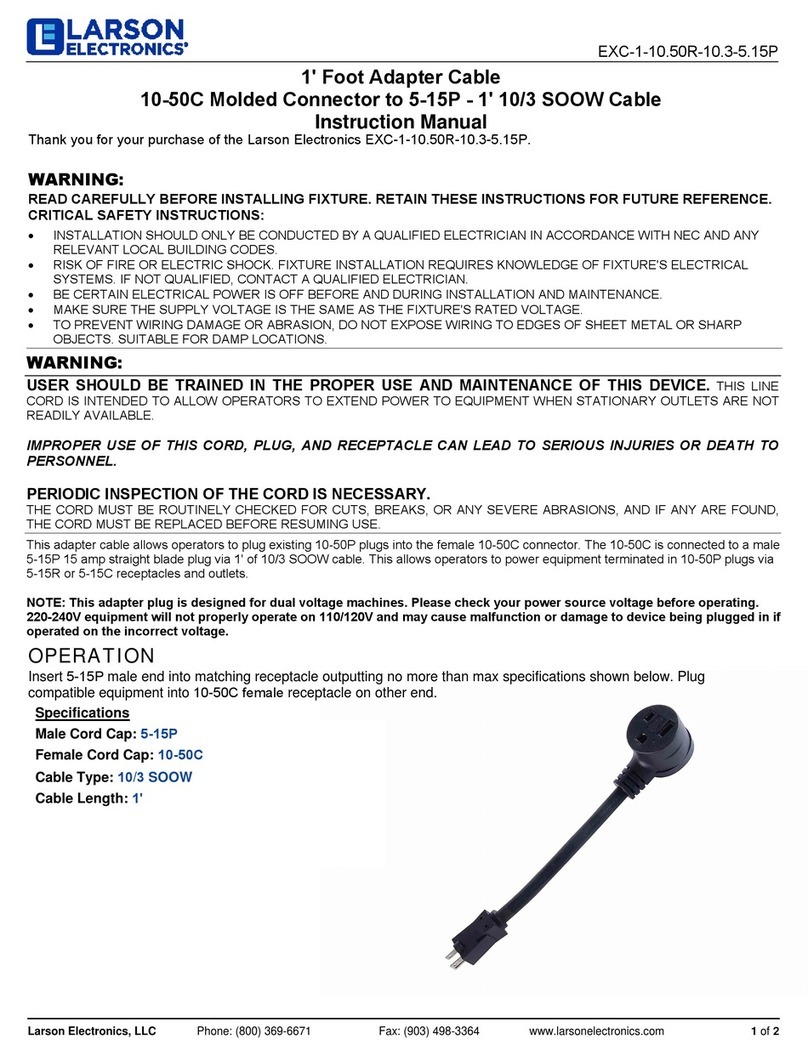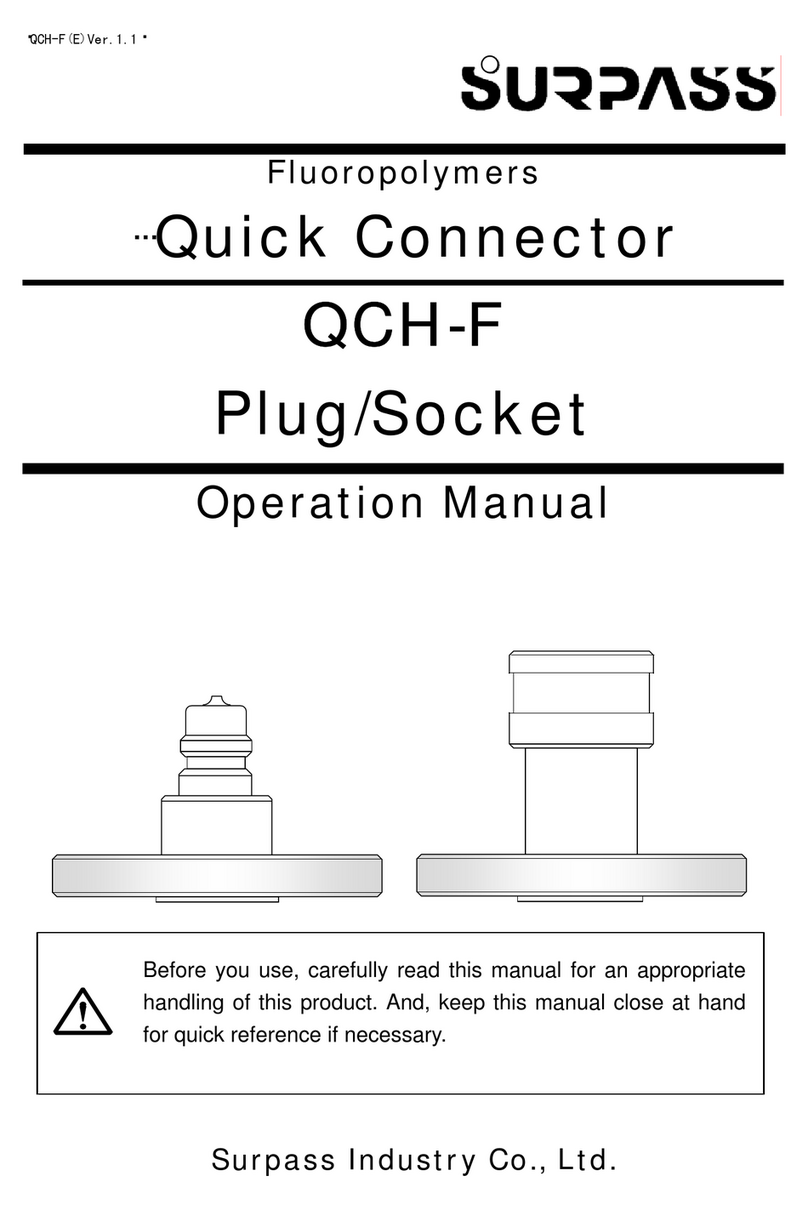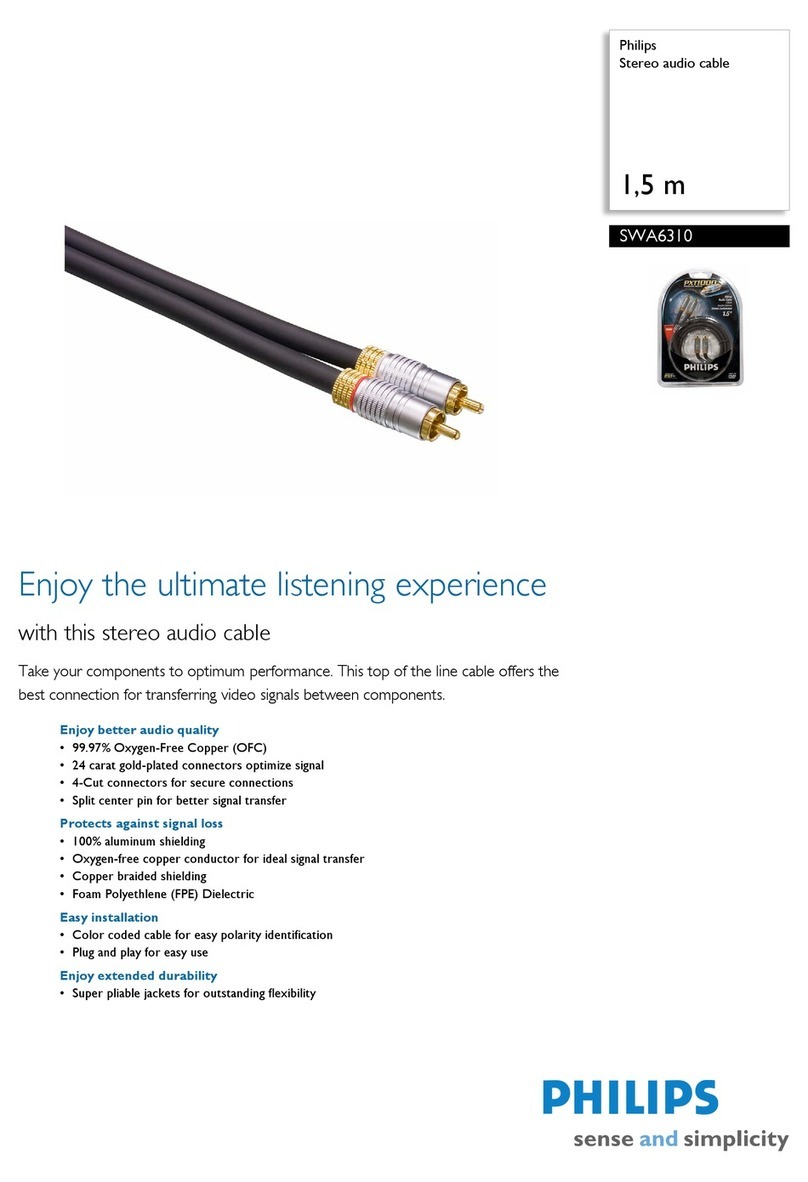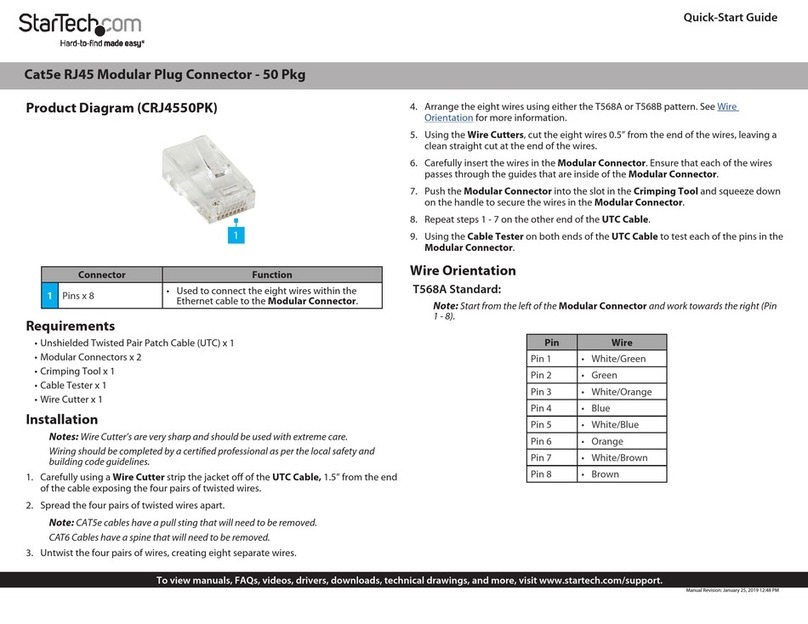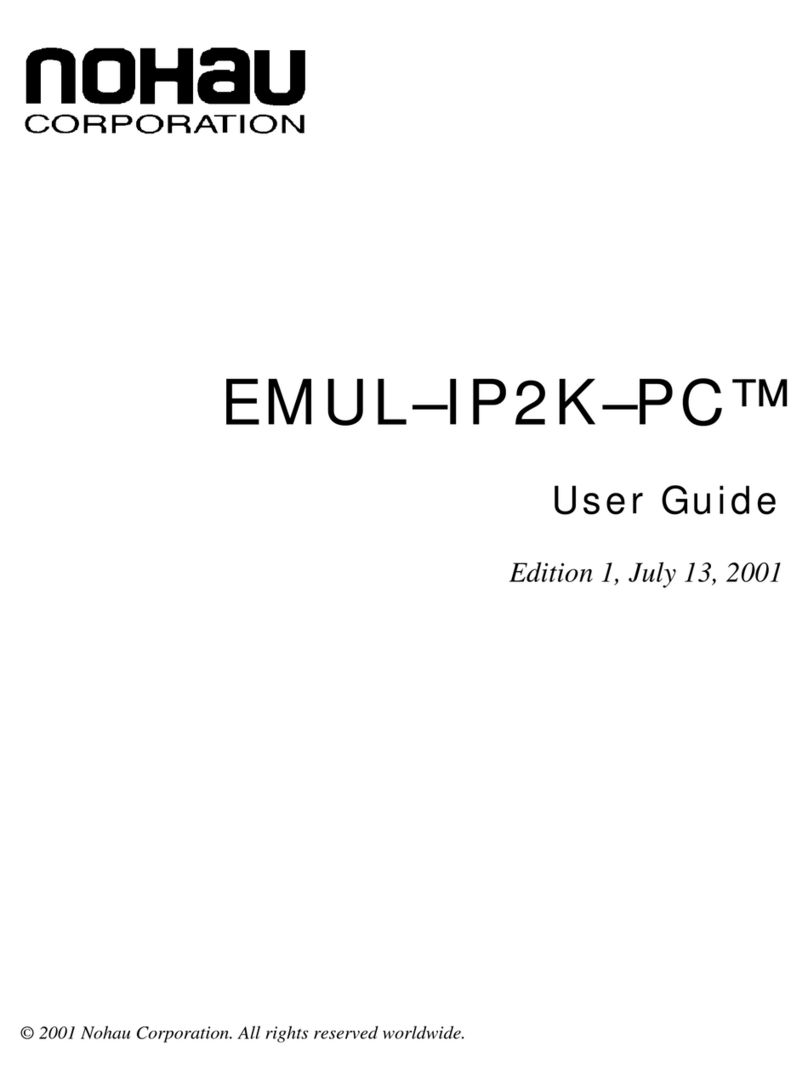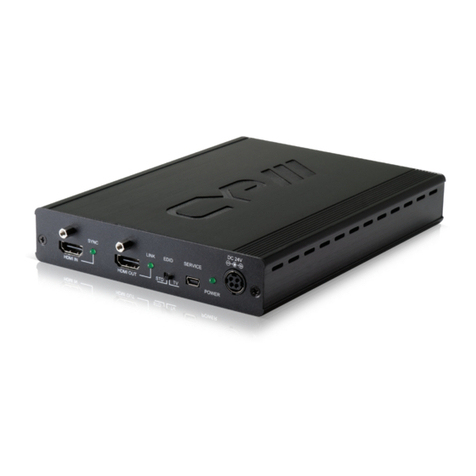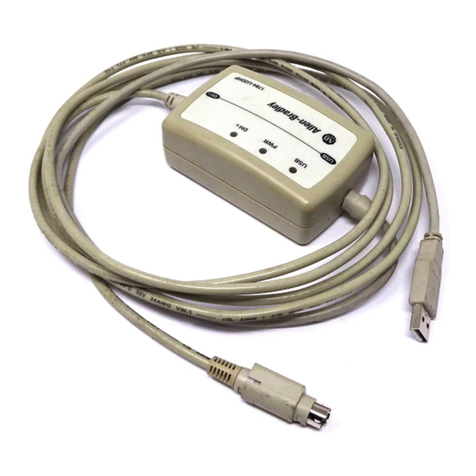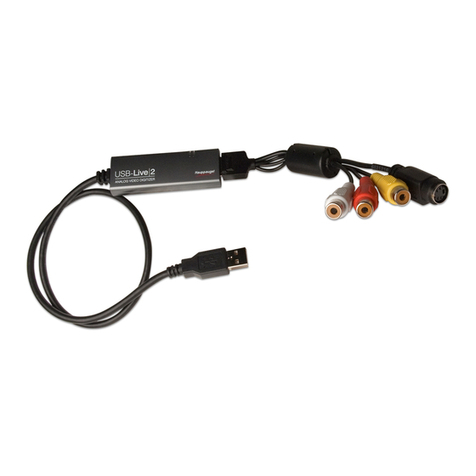Special Instructions for HSTTT Heat Shrink Tubing
TFE tubing is the most difficult to shrink due to its high shrink temperature. TFE shrink tubing must
be heated to the gel state (621°F/327°C) to completely recover. This can be recognized when the
tubing changes from milky white to clear. It can be shrunk with a heat gun or torch but it is very
difficult to use these methods since they have a tendency to overheat the tube in one area while
other areas remain too cool. The most reliable way to shrink TFE is in an oven. Position the heat
shrink over object to be covered and place it in an oven set at 725°F (385°C) until the tubing turns
clear. Once clear, remove assembly from oven to prevent overheating and allow it to cool at room
temperature. Do not quench in cold air or water. Large objects, particularly metal tubing or rods,
must be preheated to get a uniform shrink.
WARNING
Follow installation instructions carefully. Use adequate ventilation and avoid charring or burning.
Consult Material Safety Data Sheet for further information.
©
PANDUIT
Corp. 2008 REV02
INSTALLATION INSTRUCTIONS IN-002
For Technical Support: www.panduit.com/resources/install_maintain.asp
Istruzioni per l'uso corretto della guaina termorestringente in Teflon HSTTT
La guaina in TFE è la più difficile da restringere a causa dell'elevata temperatura di restringimento.
Per un ritiro completo, la guaina TFE deve essere portata ad una temperatura di 621°F/327°C fino a
renderia gelatinosa. Se l'operazione è stata eseguita correttamente, la guaina cambia colore da
bianco latte a trasparente. Si può restringere utilizzando un phon a una fiamma, ma è molto difficile
usare questi metodi in quanto hanno la tendenza a sovrariscaldare la guaina in un punto, mentre le
altre parti restano più fredde. Il metodo più adatto per il restringimento della guaina TFE è l'utilizzo
di un forno: posizionare la guaina sull'oggetto da ricoprire e metteria nel forno portato a 725°F
(385°C) fino a che la guaina diventa trasparente. A questo punto togliere il tutto dal forno per evitare
un surriscaldamento e consentire il raffreddamento a temperatura ambiente. Non raffreddare con
aria fredda o acqua. Oggetti grandi, in particolar modo tubi o barre in metallo, devono essere
pre-riscaldati per ottenere un restringimento uniforme.
ATTENZIONE!
Seguire attentamente le istruzioni d'uso. Utilizzare un'adeguata ventilazione ed evitare di
incendieare il tubetto. Per ulteriori informazioni richiedere i dati tecnici sui materiall.
Instructions spéciales pour Gaine Thermorétractable HSTTT
La gaine en TFE est la plus difficile à rétreindre à cause de sa tenue à la haute température. La
gaine thermorétractable devra être chauffée jusqu'à un état gélatineux (327°C) pour un
recouvrement complet. Ceci se constate lorsque la gaine passe du blanc au transparent. Elle peut
être rétreinte à l'aide d'un générateur à air chaud ou d'une torche mais il est très difficile d'utiliser
ces méthodes puisque elles ont tendance à surchauffer la gaine sur une portion alors que d'autres
surfaces restent froides. La technique la plus fiable pour rétreindre la gaine TFE est l'utilisation d'un
four. Placer la gaine thermorétractable par-dessus l'objet à couvrir et mettre le tout dans un four à
(385°C) jusqu'à ce que la gaine devienne translucide. A ce moment, retirer l'assemblage du four
afin d'éviter une surchauffe et laisser refroidir à température ambiante. Ne pas plonger
l'assemblage dans de l'eau ou de l'air froid pour un refroidissement rapide. Des objets volumineux,
et en particulier des tubes ou des tiges en métal, doivent être pré-chauffés pour obtenir un
rétreint uniforme.
ATTENTION
Suivez soigneusement les instructions d'installation. Prévoir une ventilation adéquate et éviter de
carboniser ou de brûler la gaine. Consulter la feuille de Sécurité de matière pour une
information complémentaire.
HSTTT Teflon Heat Shrink
Special Instructions for HSTTT Heat Shrink Tubing
TFE tubing is the most difficult to shrink due to its high shrink temperature. TFE shrink tubing must
be heated to the gel state (621°F/327°C) to completely recover. This can be recognized when the
tubing changes from milky white to clear. It can be shrunk with a heat gun or torch but it is very
difficult to use these methods since they have a tendency to overheat the tube in one area while
other areas remain too cool. The most reliable way to shrink TFE is in an oven. Position the heat
shrink over object to be covered and place it in an oven set at 725°F (385°C) until the tubing turns
clear. Once clear, remove assembly from oven to prevent overheating and allow it to cool at room
temperature. Do not quench in cold air or water. Large objects, particularly metal tubing or rods,
must be preheated to get a uniform shrink.
WARNING
Follow installation instructions carefully. Use adequate ventilation and avoid charring or burning.
Consult Material Safety Data Sheet for further information.
©
PANDUIT
Corp. 2008 REV02
INSTALLATION INSTRUCTIONS IN-002
For Technical Support: www.panduit.com/resources/install_maintain.asp
Istruzioni per l'uso corretto della guaina termorestringente in Teflon HSTTT
La guaina in TFE è la più difficile da restringere a causa dell'elevata temperatura di restringimento.
Per un ritiro completo, la guaina TFE deve essere portata ad una temperatura di 621°F/327°C fino a
renderia gelatinosa. Se l'operazione è stata eseguita correttamente, la guaina cambia colore da
bianco latte a trasparente. Si può restringere utilizzando un phon a una fiamma, ma è molto difficile
usare questi metodi in quanto hanno la tendenza a sovrariscaldare la guaina in un punto, mentre le
altre parti restano più fredde. Il metodo più adatto per il restringimento della guaina TFE è l'utilizzo
di un forno: posizionare la guaina sull'oggetto da ricoprire e metteria nel forno portato a 725°F
(385°C) fino a che la guaina diventa trasparente. A questo punto togliere il tutto dal forno per evitare
un surriscaldamento e consentire il raffreddamento a temperatura ambiente. Non raffreddare con
aria fredda o acqua. Oggetti grandi, in particolar modo tubi o barre in metallo, devono essere
pre-riscaldati per ottenere un restringimento uniforme.
ATTENZIONE!
Seguire attentamente le istruzioni d'uso. Utilizzare un'adeguata ventilazione ed evitare di
incendieare il tubetto. Per ulteriori informazioni richiedere i dati tecnici sui materiall.
Instructions spéciales pour Gaine Thermorétractable HSTTT
La gaine en TFE est la plus difficile à rétreindre à cause de sa tenue à la haute température. La
gaine thermorétractable devra être chauffée jusqu'à un état gélatineux (327°C) pour un
recouvrement complet. Ceci se constate lorsque la gaine passe du blanc au transparent. Elle peut
être rétreinte à l'aide d'un générateur à air chaud ou d'une torche mais il est très difficile d'utiliser
ces méthodes puisque elles ont tendance à surchauffer la gaine sur une portion alors que d'autres
surfaces restent froides. La technique la plus fiable pour rétreindre la gaine TFE est l'utilisation d'un
four. Placer la gaine thermorétractable par-dessus l'objet à couvrir et mettre le tout dans un four à
(385°C) jusqu'à ce que la gaine devienne translucide. A ce moment, retirer l'assemblage du four
afin d'éviter une surchauffe et laisser refroidir à température ambiante. Ne pas plonger
l'assemblage dans de l'eau ou de l'air froid pour un refroidissement rapide. Des objets volumineux,
et en particulier des tubes ou des tiges en métal, doivent être pré-chauffés pour obtenir un
rétreint uniforme.
ATTENTION
Suivez soigneusement les instructions d'installation. Prévoir une ventilation adéquate et éviter de
carboniser ou de brûler la gaine. Consulter la feuille de Sécurité de matière pour une
information complémentaire.
HSTTT Teflon Heat Shrink
